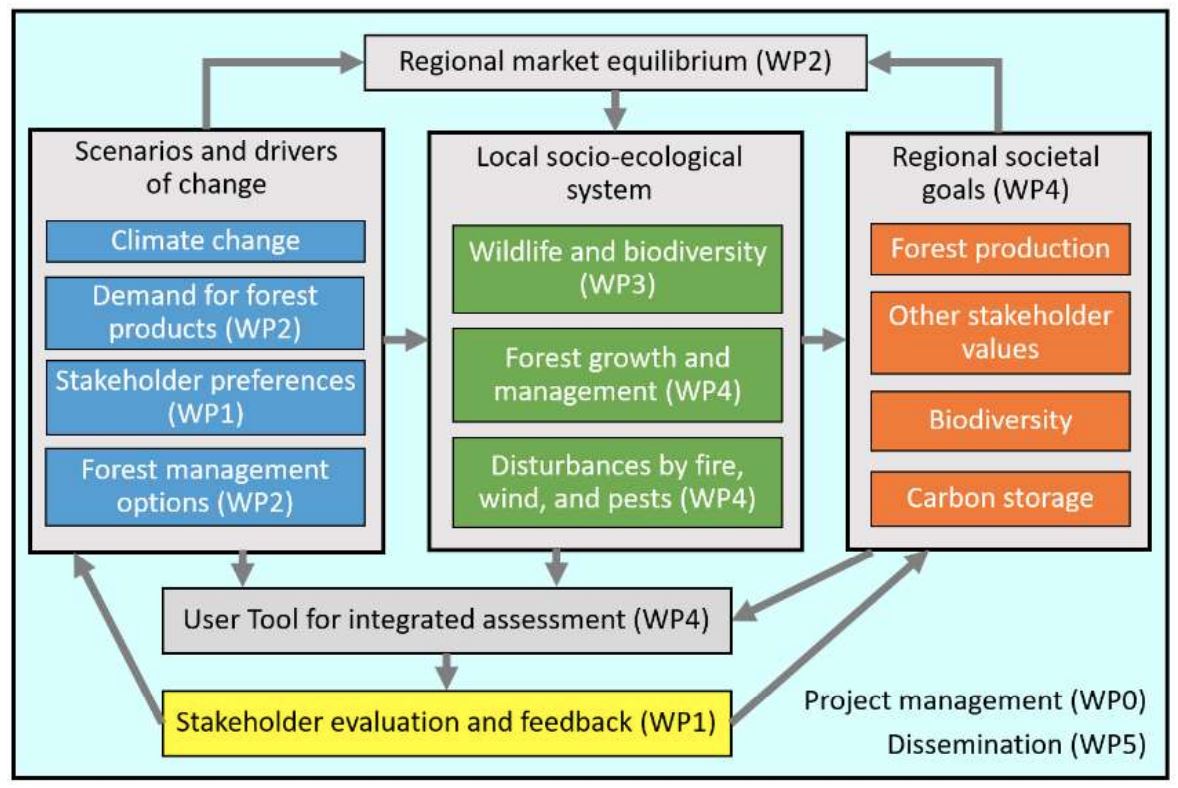Forests and Wildlife under Pressure
- System Analysis for Sustainable Solutions
Boreal forest is a basis for many societies in the taiga zone where natural and cultural heritage is tightly connected to forests and wildlife. It is home to a high diversity of species, ecological processes, and functions. However, exploitation and use of forest resources strongly influence and shape today’s forests.
For instance, hunting is of economic importance as well as having essential recreation values; however, moose can cause damage to forest production, leading to conflicts of interests between different actors and a preference for planting spruce instead of pine to avoid damages. This, in turn, alters biodiversity and recreational value.
Moreover, climate change will radically transform the northern forests - the foundation for societies across Nordic countries - in several ways. Climate change will bring storms, fire, and pressure on wildlife, but also enhanced growth potential in the forests. We have a basic understanding of each of these risks and opportunities, but the challenge is that they are interacting and require long-term foresight to be successfully managed. Because of the changing environmental conditions, the future behavior of the system can no longer be predicted based on extrapolation of historical observations. This can only be accomplished if we can look into the future outcomes of alternative strategies in a system-wide perspective.
By co-creating a prognostic system model with key forest stakeholders, the TaigaClimate project will assess future prospects for forestry, wildlife, recreation, and biodiversity. A user tool based on a machine learning-approximation of the processed-based model will allow us to narrow down the huge space of possible options to find pareto-optimal alternatives. These will be discussed with stakeholders to find the most acceptable and sustainable solutions based on their preferences. A user-friendly application of this powerful tool will be made available online to enable forest owners, policymakers, and the general public to make their own assessments under different climate change scenarios (Figure 1).
